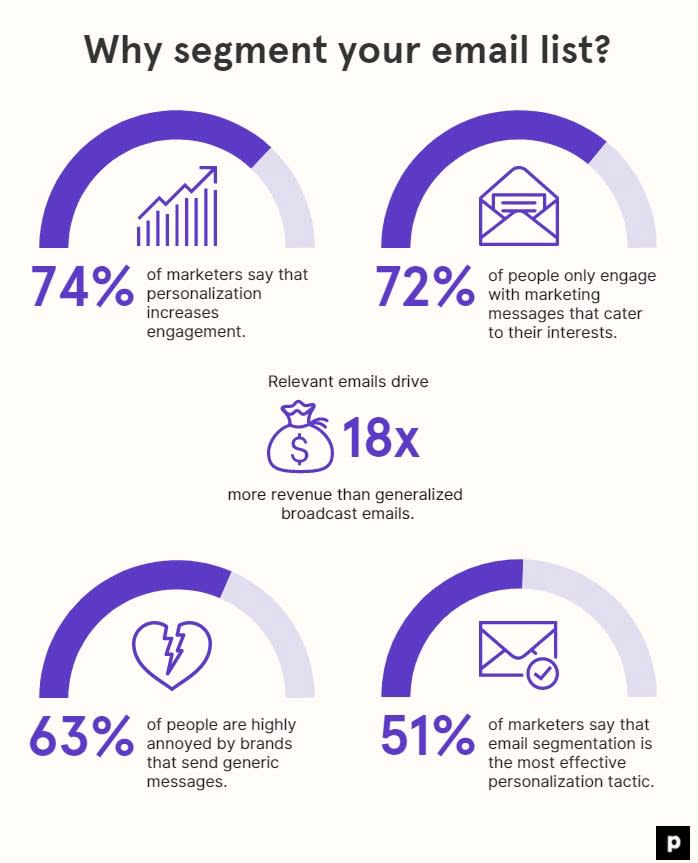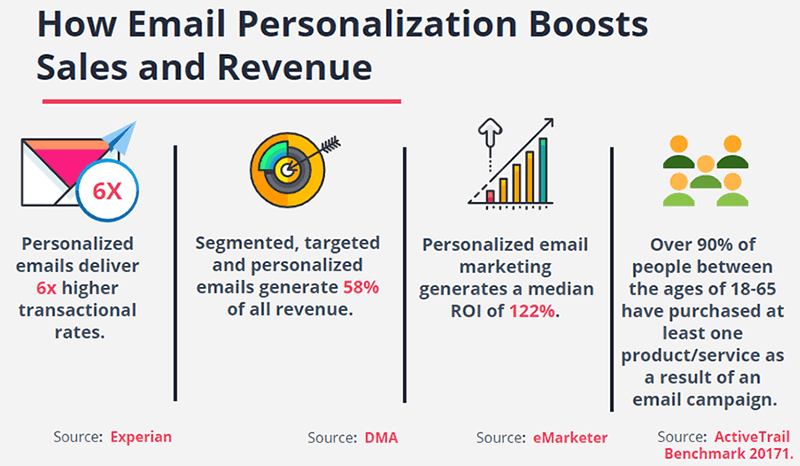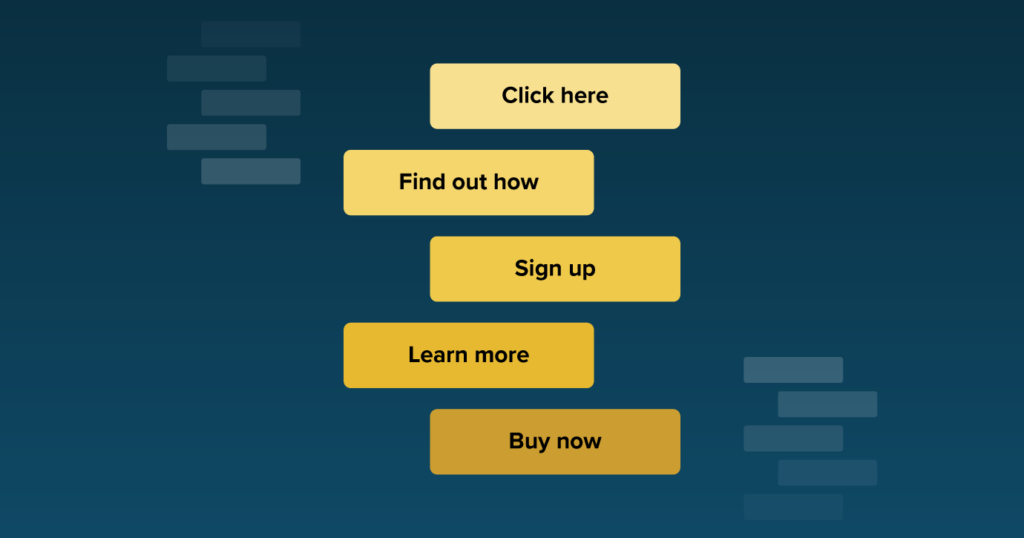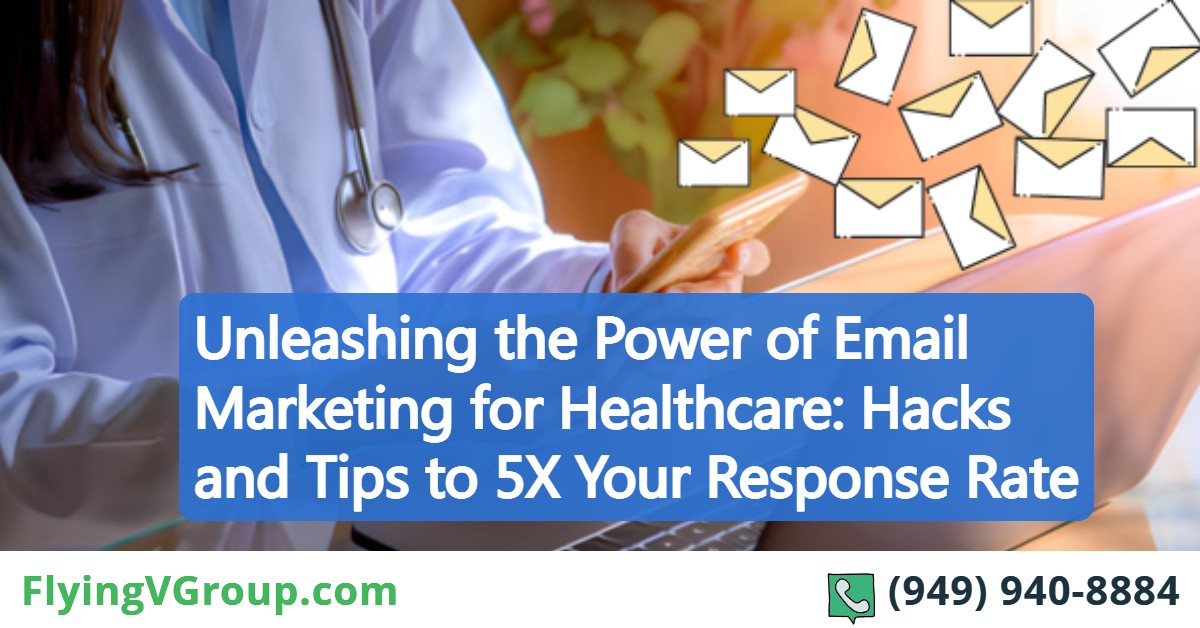As the healthcare industry continues to evolve, so do the marketing strategies used to engage your patients and clients online. Do you know the most effective way to reach your healthcare audience in the healthcare industry?
If you guessed email marketing, you’re absolutely right. With the rise of digital communication, email marketing has become a game-changer for the healthcare industry. Not only is it a cost-effective way to communicate with your target market, but it’s also a great way to establish trust and build lasting relationships.
However, just sending out mass emails won’t cut it. To truly harness the power of email marketing, you need to implement specific tactics to open your emails and increase the chances of your readers taking action.
Many healthcare professionals find it challenging to get their emails noticed and read by their target audience. That’s why we’ve put together this article to help you improve your email marketing strategy.
We’ll cover everything from creating an engaging subject line to optimizing your email content.
Whether you’re a marketer, healthcare professional, or business owner, this article will provide valuable insights into how you can leverage email marketing to reach your target audience and drive conversions.
With tips and hacks backed by subject matter experts in the healthcare industry, you can trust that these strategies are tried and tested. We’ve put each hack and trick into a subhead in this post for easy consumption.
So, without any further ado, let’s dive into the world of email marketing and unlock its full potential for your healthcare business.
Segment Your Email List

Segmenting your email list is the first thing you must do if you want to see a high ROI for your email marketing in healthcare efforts. It involves dividing your email subscribers into smaller groups based on specific criteria such as demographics, medical conditions, treatment plans, or engagement behavior.
This kind of separation allows you to send targeted and personalized emails that resonate with each segment’s unique needs and interests. Segmenting your email list has several benefits;
Personalized Content
By segmenting your list, you can send personalized and relevant content to each group of subscribers, which helps build trust and strengthens your relationship with them.
Higher Engagement Rates
Sending targeted emails to your subscribers can increase engagement rates because they are likelier to open, read, and click through your emails. This can increase appointment bookings, medication adherence, or other desired actions.
Improved Patient Outcomes
When you segment your email list based on medical conditions, treatment plans, or other relevant criteria, you can provide information and resources tailored to each patient’s specific needs. This can help to improve patient outcomes and satisfaction levels.
Better Email Deliverability
When subscribers engage with your emails, it signals to email service providers that your emails are valuable and relevant, improving your sender’s reputation and deliverability. Hence, reduce the chances of your email landing in the spam folder.
There are several criteria to divide your email subscribers into. You can put them in groups of;
Demographics: Age, gender, location, language, or other demographic data can be used to segment your list.
Medical conditions include diabetes, cancer, heart disease, and other health issues.
Treatment plans: You can segment your list based on the type of treatment plan that each patient or client is currently on.
Engagement behavior: how engaged each subscriber is with your emails, such as open rates, click-through rates, or other metrics.
Another strategy that goes a long way in making your emails successful is to add a touch of personalization.
Personalize Your Emails

Personalizing your emails in healthcare email marketing means tailoring the content of your emails to the individual recipient based on their specific needs, preferences, and behaviors. In other words, it means crafting the email such that it seems it was written to one person and not to an email list.
You can pull this off by using the recipient’s name in the subject line or greeting, providing information relevant to their medical condition or history, and sending targeted promotions or educational materials based on their past interactions with your brand.
Taking time to personalize your email copy can build stronger relationships with your subscribers, increase engagement and response rates, and ultimately improve the effectiveness of your healthcare email marketing campaigns.
To effectively personalize your emails in healthcare, collect relevant data on your patient’s demographics, medical conditions, treatment plans, and engagement behavior. Use this data to segment your email list and tailor your content accordingly.
Then, use personalization tokens such as first name, last name, and location can be used to personalize your email subject lines and greetings.
Ensure that your email content is relevant and valuable to your patients. For example, you can provide tips on managing their condition, information on new treatments, or links to resources that can help them.
After you’ve done all these, test different personalization strategies and analyze your results to determine what works best for your audience. Continuously optimize your email campaigns to improve their effectiveness.
In short, personalizing your emails is a valuable strategy for email marketing in healthcare. By tailoring your content to your patient’s unique needs and interests, you can improve engagement rates and patient outcomes and establish a more substantial brand reputation.
Even though segmenting your list and personalizing your emails would increase your email clickthrough rates, you have to actually get your subscribers to open the email.
How? That’s where the magnetic email subject line comes to the rescue.
Create Compelling Subject Lines
The subject line of your email is the first thing your subscribers see, and it can determine whether they open your email or not. Therefore, creating compelling subject lines is critical for email open rates and the success of your email marketing campaigns.
A magnetic subject line can capture your audience’s attention, pique their interest, and entice them to open up and engage with your content.
If your subject line is uninteresting, vague, or unappealing, subscribers will likely ignore or delete your email. On the other hand, a compelling subject line can grab their attention, increase their curiosity, and motivate them to read further.
Here are some tips to help you create compelling subject lines for your healthcare emails:
Be concise: Keep your subject lines short and to the point. A shorter subject line can be more eye-catching and easier to read.
Be clear: Your subject line should clearly and precisely communicate your email’s main topic or benefit. Avoid vague or misleading subject lines.
Use urgency and scarcity: Using phrases such as “limited time offer” or “urgent message” can create a sense of urgency and motivate your subscribers to take action.
Use numbers or statistics: Including numbers or statistics in your subject line can make your email more intriguing and credible.
Use emotive language: Using emotive language such as “life-saving tips” or “life-changing information” can evoke an emotional response and increase engagement. But please don’t overdo it, or you risk losing your subscribers’ interest.
To further explain our point, here are some examples of effective subject lines in healthcare emails you can use. We grouped them according to the kind of email you might send;
Personalized Appointment Reminders: “John, don’t forget your appointment tomorrow at 10 am”
Health Newsletter: “10 Simple Ways to Boost Your Immune System Today”
Treatment Plan Updates: “Important Update: Changes to Your Treatment Plan”
New Healthcare Services: “Introducing Our New Virtual Health Consultation Service”
Health Tips: “5 Surprising Ways to Lower Your Blood Pressure Naturally”
Using personalization, clarity and specificity, urgency, scarcity, and emotive language, you can create subject lines that capture your audience’s attention and increase engagement rates.
Make your Email Engaging
To write compelling email marketing for the healthcare industry, creating valuable and relevant content for your target audience is crucial. Your content should be informative, actionable, and easy to read. Here are some tips to help you achieve this:
First and foremost, you have to know your audience. Understanding their needs, interests, and pain points can help you create content that resonates with them. When you’re able to connect with your audience on a deeper level, you’ll be able to build trust and loyalty.
When creating your content, make sure to focus on the benefits rather than just the features of your product or service. Explain how your offering can solve their problems and improve their health. This will help your audience understand the value of what you’re offering and why it’s essential for them.
Visuals are also a powerful tool in email marketing. Incorporating images, infographics, and videos can make your content more appealing and engaging. By breaking up your text with visual aids, you’ll be able to keep your audience’s attention and make your message more memorable.
You should also keep your content concise. Use short sentences, bullet points, and subheadings to summarize the text. This makes it easier for your audience to digest the information you’re presenting.
Storytelling techniques help you create a narrative that engages your audience and makes your content more relatable. When you can connect with your audience on an emotional level, you’ll be able to create a lasting impression.
By following these tips, you can create engaging email content that connects with your audience, educates them about your product or service, and motivates them to take action.
Remember, the key is to provide value to your subscribers and make it easy for them to engage with your content.
Optimize Your Emails for Mobile
In today’s world, people rely heavily on their mobile devices for all sorts of tasks, including checking emails. This is why optimizing your healthcare marketing emails for mobile devices is essential.
Here’s why mobile optimization is crucial and some tips on how to do it effectively.
According to recent statistics, more than 50% of all email opens happen on mobile devices. This means that if your healthcare marketing emails are not optimized for mobile, you risk losing a significant portion of your audience.
Optimizing your emails for mobile makes them easier to read, navigate, and interact with. This improves the user experience and can lead to higher engagement rates and conversions.
Moreover, email clients like Gmail and Yahoo prioritize mobile-friendly emails in their inboxes. Therefore, optimizing your healthcare marketing emails for mobile can improve your email deliverability and ensure your messages reach your audience’s inbox.
Here are a few tips for optimizing your emails for mobile in healthcare;
1. Use a responsive email design: A responsive design ensures that your healthcare marketing emails adapt to the screen size of the device they are being viewed on.
2. Use fonts that are easy to read on small screens, and avoid using small fonts that are difficult to read.
3. Before sending your healthcare marketing emails, preview them on mobile devices to ensure they look and function correctly.
Optimizing your healthcare marketing emails for mobile devices is essential to ensure that your messages reach your audience and provide a positive user experience.
Include a Clear Call-to-Action

A call-to-action (CTA) prompt tells your readers what to do next, like clicking on a link or booking an appointment. Having a clear CTA in healthcare emails is essential, so your audience knows what action to take. Otherwise, you might not get a good response.
By including a clear CTA, you can increase conversions, appointments, and engagement rates. Here are some tips for making your CTA clear:
Use action words: Write phrases like “book now” or “get our free guide” to encourage your audience to take action.
Make it stand out: Use colors, font styles, and sizes to make your CTA stand out from the rest of the email. That way, it’s easier to notice and click on.
Place it strategically: Put your CTA where it’s easy to find, like at the end of the email or in a noticeable location.
Create urgency: Use words like “limited time offer” or “don’t miss out” to make your readers feel they must act fast.
In short, a clear call to action is critical in healthcare emails because it tells your audience what to do next. Use action words, make it stand out, place it well, and create urgency for a successful healthcare email campaign.
Concluding Thoughts
Email marketing in healthcare is a powerful tool to help you engage with your audience, drive conversions, and ultimately grow your business. To maximize the impact of your email marketing campaigns, it’s crucial to implement effective hacks and tips that will help you stand out in a crowded inbox.
In this blog post, we’ve discussed several tips and hacks that you can use to 5X your response rate. We discussed the importance of segmenting your email list, personalizing your emails, creating compelling subject lines, writing engaging email content, and optimizing your emails for mobile.
Each of these tips is critical for creating successful email marketing campaigns in healthcare. We encourage you to try these hacks and tips and see how they work for you. Remember to measure and track your results to continuously improve your email marketing campaigns.
Finally, we would love to hear from you about your own tips and experiences with email marketing in healthcare. Share your insights with us and other readers in the comments section below. Together, we can create even more successful email marketing campaigns in the healthcare industry.






0 Comments